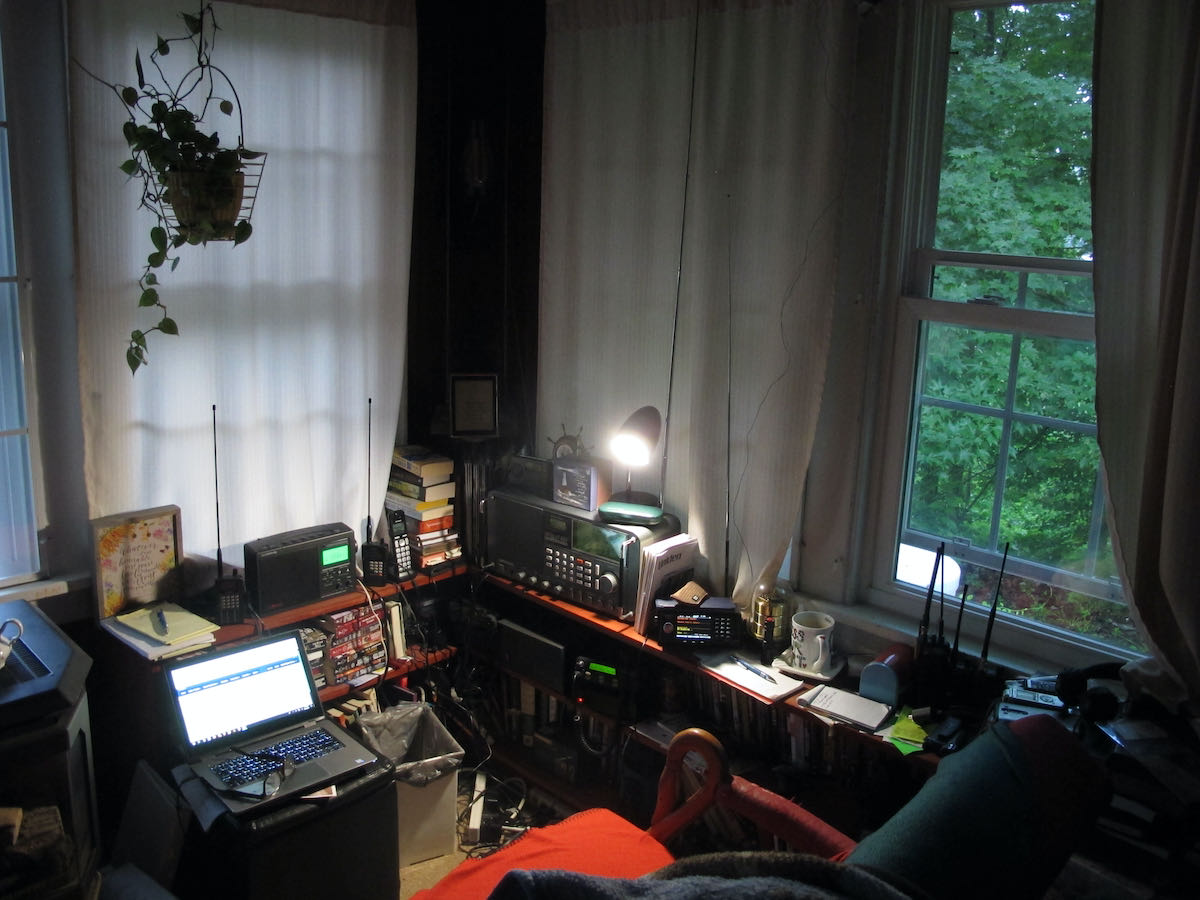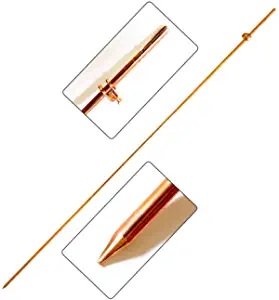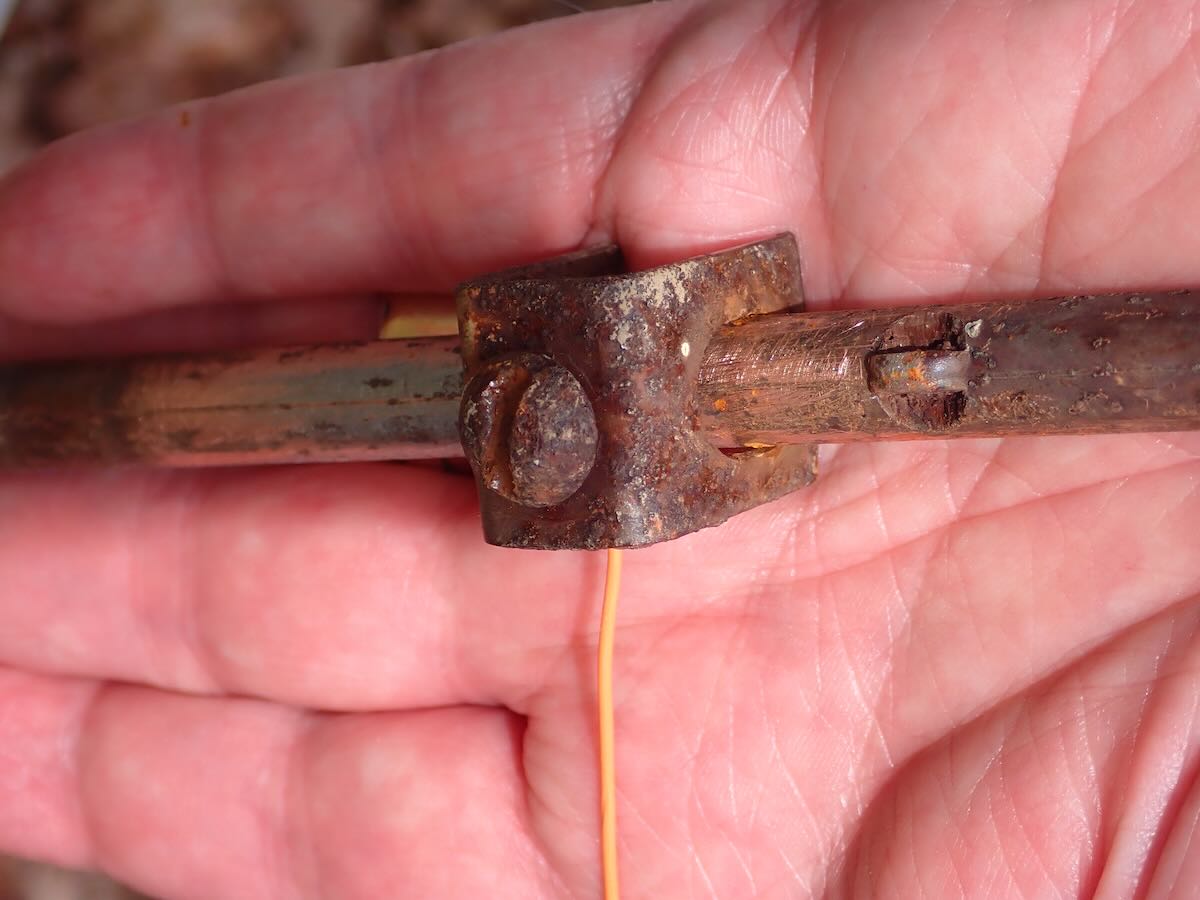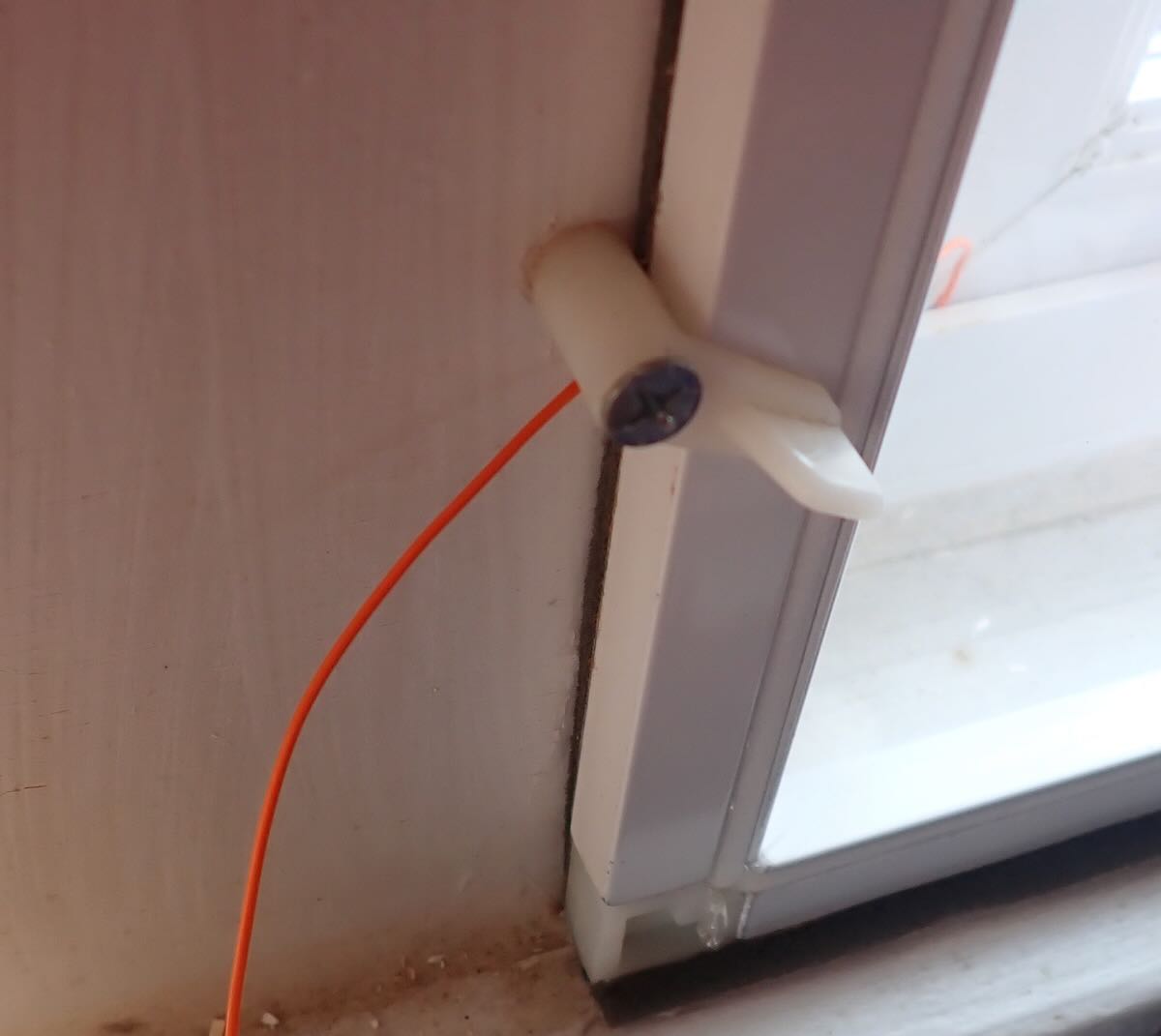Many thanks to SWLing Post contributor, Jock Elliott, who shares the following guest post:
Getting grounded – at last!
By Jock Elliott, KB2GOM
Readers’ comments are among the best things about writing for the SWLing.com blog. When a reader responds to a post and leaves a comment, it does three things. First, it lets the author know that someone actually read the post. Second, it provides valuable feedback – “I liked it.” “Did you know about this . . .?” “I had a similar experience.” – and so forth. Finally, it provides the author an opportunity to learn something, and that perhaps is the most fun.
A case in point: when I posted this, Andrew (grayhat) said:
“If you want to make an experiment, connect the end-fed to the Satellit high-Z wire input (clamp), then pick a (relatively short) run of insulated wire connect one end of the wire to the high-Z “ground” (clamp) and the other end of that wire to the “gnd” hole in the wall plug
The above being said, I prefer keeping antennas outside and taking care of the feedline, this helps reducing or eliminating noise from indoor appliances like switching PSUs and other things, anyway, if you want, try the above idea and let me know how it works for you”
To which, I responded:
“Thanks for the comments.
Thanks to a tree falling on the powerlines, I now know that the inherent electrical noise in my radio room is basically down to the level of atmospheric noise.
Neverthless, experimenting with a ground is definitely worth trying. A thin wire, sneaked out the window to a ground rod, might do the trick. I’ll report back after I try.”
Andrew (grayhat) came back to me and said:
“I was serious, try the “wall plug ground” I described, it won’t start any “magic smoke” or the like, otherwise, if you can lay out a wire with a length of 5m max, cut to be NON resonant, and connected to a good ground stake, go for it
Then, if you want to discuss this further, just ask Thomas for my e-mail, I agree to share it with you.”
Now, I really appreciated Andrew’s comments, but what I had not told him was that there is just one wall plug in my radio shack; it is really inaccessible, and I am not sure I can get a ground off it. Further, the rest of the power “system” in my shack is a rat’s nest of power bars and extensions, and I have zero confidence that any of them will provide a useful ground.
But – and this is a big but – I did take Andrew’s point: that connecting an actual ground to the ground clip on the back of the Satellit 800 might improve things.
Two big advantages I have at my shack are that it is on the ground floor, and there are windows right next to the radios. It is maybe eight feet from the back of the Satellit 800 to the ground outside the window. So running a wire from the 800 to a ground rod could be potentially easy.
I am in the act of researching a source for ground rods on the internet when I am interrupted by the “brain dudes” in the back of my head who run the filing system. The conversation went something like this:
Brain dudes: Hey!
Me: What?!!
Brain dudes: Didn’t you use to have a ground rod out front when you had your ten meter antennas on the roof?
Me: Yeah . . .
Brain dudes: Didn’t you – at your Better Half’s request – pull that ground rod out of her flower bed when you took the antennas off the roof?
Me: Yeah . . .
Brain dudes: Well, we had a meeting here, and we think you might have put that old ground rod in a corner of the garage. Why don’t you go have a look?
Me: Well, if you really think so . . .
Brain dudes: Yeah, we think so. Get going.
So I wander out to the garage, and there, in the corner, is the old ground rod. Thank you, Brain Dudes!
Before I show you what I found, first you need to see what a new ground rod looks like:
See! Nice and shiny and bright and wonderful.
MATURE VIEWER WARNING: scroll down only if you are mentally and psychologically prepared to view what an old ground rod looks like.
Okay, you’ve been warned:
Not pretty, not nice, but possibly usable. With some effort, I was able to unscrew the clamp screw and slide the clamp up and down. Next, sandpaper of various grades was applied to the rod in the clamping area to remove corrosion and increase the likelihood that the ground wire might make actual good electrical contact with the ground rod.
I went outside, hammered the rod into the ground, attached the ground wire, and sneaked (snuck?) it in through the window.
With one end of the horizontal room loop attached to the red wire terminal on the back of the Satellit 800 and the ground wire connected to the black wire terminal on the 800, I started tuning around the time stations on 5, 10, and 15 MHz and used the antenna switch on the back of the 800 to change between the wire terminal antenna and the indoor end-fed antenna (which is also connected to the 800 but through coax). The indoor end-fed had a stronger, more copyable signal than the antenna connected to the wire clips and the ground rod. Hmmm. Note: both antennas are approximately the same length and are run along the same path in my radio shack; see the original post above.
But then I tried connecting the ground wire to the appropriate terminal on the LDG 9:1 unun feeding the coax to the Satellit 800.
Tah-dah! Instant improvement in the signal. Attaching and removing the ground wire from the LDG unun I could see a clear one-half S unit change when I attach or detach the ground wire. Excellent! So now, the indoor end-fed antenna run through the LDG 9:1 unun with ground wire attached is my go-to setup for the Satellit 800.
Thank you, Andrew (grayhat), “You da man!”
That’s my story, and I’m sticking to it.






I have used the power outlet’s ground with my SDR for six months. On the waterfall, it’s a night and day difference when I repeatedly remove the cable and touch it on the grounding terminal of my RSP1A (I installed the metal case upgrade). Signal-to-noise improves a healthy amount.
VK5014SWL,
Good to know!
Cheers, Jock
Since we are discussing grounding and “make do” indoor antennas,
it would be a good time to re-try the old SRI design directional grounded whip antenna above a “pizza pan” ground plane, especially since SRI was paid to come up with that weird design to help Ukrainian/Iron Curtain shortwave listeners null out USSR jamming.
Anyone have any success out in the field using automobile bodies to directionally shield or enhance AM portable reception? Does it ever help to temporarily ground the auto body using a ground rod?
My own experience is that there is a small benefit to place the steel body of a van to block a strong 5000 Watt 590 kHz wide bandwidth local (WVLK) to receive a 100 mile distant 600 kHz (WKYH) using a Sangean PR-D5, but have never tried grounding the van body.
Henry,
Sorry, I am a hotbed of ignorance on the topic you brought up.
Cheers, Jock
Hi Jock, happy to hear you sorted it out and it worked as I was expecting it to 🙂
Now, you are lucky enough to be able to run a short wire to a ground stake, but since some people doesn’t have such a luck, I suggest reading this
https://www.w8ji.com/second_floor_grounding.htm
to see how one may put together an RF ground system even if a real ground is far away
That said, thanks you all for your nice words !
Oh and, Jock, if your home has a porch, have a look at this antenna
http://www.kk5jy.net/porch-loop/
given that you already have a 9:1 it may be easy to try 😉
Andrew,
My pleasure.
Cheers, Jock
Excellent practical advice on both sides. Grounding can at times seem like voodoo, but sometimes it really is fairly simple. Great article and great humor to boot, a nice way to start the day!
Robert,
Thanks for your kind words.
Cheers, Jock
Smart, and funny too!
Thanks, Frans, for the kind words!
Cheers, Jock
Excellent post, Jock! I love your sense of humor, too. My own “brain dudes” have kicked in from time to time and saved me from buying things I already owned!
Everyone should have a good RF ground, but few of us actually do this.
Big hat tip to our resident RX antenna guru, Andrew (Grayhat), for his constructive comments!
I remember when I was a teenager, getting “grounded” was a bad thing. My how times change…
Cheers,
Thomas
Thomas,
Yes, BIG hat tip to Andrew (grayhat) and, of course, the brain dudes!
Cheers, Jock